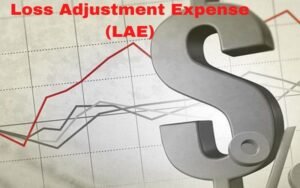Beacon Credit Score: Definition vs. FICO Score and Pinnacle Score
A beacon score is one of many credit scoring models developed by FICO, the primary company in that field. It is still used today but is branded simply as a FICO score. In years past, it was often referred to as an Equifax Beacon score, after the credit bureau Equifax. For example, according to FICO, a Beacon 5.0 score is now known as a FICO Score 5. That score remains widely used in the mortgage industry.
How FICO Credit Scores Work Today
The three major credit bureaus—Equifax, Experian, and Transunion—compile information on the credit habits of individual consumers in the form of credit reports. That information is then used to compute a credit score for the individual using various methodologies. Credit scores are three-digit numbers—typically between 300 and 850—intended to grade a person’s creditworthiness. The higher the number, the more creditworthy (and less risky) they are judged to be.
Since its introduction in 1989 by the Fair Isaac Corporation, the FICO score has undergone several revisions in an attempt to make it more precise and predictive. It has also seen some name changes. In addition to the Beacon score, another early scoring model, the Pinnacle score, has since been rebranded as FICO Score NG (short for NextGen). So, for example, the former Pinnacle 2.0 is now known as FICO Score NG.
As the scoring systems have evolved, some lenders and other businesses have continued to use the older models they are most comfortable with and familiar with. In addition, FICO has developed scoring models specific to certain types of lenders. As a result, most individuals who use credit will have multiple different credit scores rather than a single one. For example, Equifax offers at least 13 different FICO scores in the United States. Those include FICO Score 8, which remains the most common FICO score, and FICO Score 9, a more recent model, along with the latest versions, FICO Score 10 and FICO Score 10T.
Industry-specific models from Equifax include FICO Score 5 for mortgage lenders; FICO Auto Score 5, FICO Auto Score 8, and FICO Auto Score 9 for lenders that make car loans; and FICO Bankcard Score 5, FICO Bankcard Score 8, and FICO Bankcard Score 9 for credit card issuers.
Experian and TransUnion offer comparable lists of different FICO score versions. While Equifax, Experian, and TransUnion continue to work with FICO and issue FICO scores, the three credit bureaus jointly created a FICO competitor, VantageScore, in 2006. Its latest version, VantageScore 4.0, was launched in 2017.
Like FICO scores, VantageScores are based on the information in individuals’ credit reports and expressed as a number between 300 and 850. However, there are some key differences. For example, Equifax notes, “To have a FICO score, consumers must have one or more credit accounts open for at least six months and… be reported to the three nationwide credit bureaus within six months. VantageScore credit scores can be calculated if consumers have one or more credit accounts open for at least one month and one account reported within the past two years.”
How to Improve Your Credit Score
FICO and VantageScore assign weights to the information in consumers’ credit reports. FICO, for example, generally weights it as follows:
- Payment history: 35%. This category reflects whether the person has paid their credit bills on time or missed any payments.
- Amounts owed: 30%. More important than how much someone owes is how much they owe as a percentage of all the available credit, referred to as their credit utilization ratio.
- Length of credit history: 15%. Older accounts count more than newer ones, assuming the person has made timely payments.
- Credit mix: 10%. Individuals get points for demonstrating that they have responsibly used more than one kind of credit, such as a credit card and an auto loan.
- New Credit: 10%. In general, the scoring models will penalize a consumer who has recently taken on a lot of new debt. Lenders consider that a red flag that they may be in some financial difficulty.
While VantageScores use slightly different weightings and the industry-specific scoring models also look at other factors, consumers can maintain good credit scores by consistently paying their credit bills on time, keeping their credit utilization ratio relatively low, and hanging on to their older accounts.
How Can You Find Out Your Credit Score?
You can obtain your credit score free of charge from many banks and credit card issuers. Some websites provide free credit scores. Remember that you probably have multiple credit scores, and whichever one you obtain may not be identical to the one a lender will use if you apply for a loan.
How Can You Obtain Your Credit Reports?
By law, you’re entitled to a free copy of your credit report from the three major credit bureaus at least once a year. The official website for that purpose is AnnualCreditReport.com. If you find any information you believe to be in error, you can dispute it with the credit bureau, and the bureau is legally required to investigate and report back to you on its findings.5
Aren’t all three credit reports the same?
Not necessarily. The credit bureaus obtain their information on you from your creditors, such as credit card issuers, mortgage lenders, and so forth. Not all creditors provide information to all three credit bureaus (and some don’t provide information to any of them), so your credit report can differ from one bureau to another. That can also affect your credit scores.
What Is a Good Credit Utilization Ratio?
Generally speaking, the lower your credit utilization ratio, the better. Equifax, for example, recommends keeping it at or below 30%.6
Credit scoring models and the brand names assigned to them have changed over the years. However, the kinds of credit habits that will help you build and keep a good credit score have remained relatively constant.
Conclusion
- The Beacon score is one of many credit scoring models developed by FICO.
- It was later rebranded and is now known simply as a FICO score.
- The three major credit bureaus—Equifax, Experian, and TransUnion—each offering multiple FICO scores—collect information to determine FICO scores.
- The three bureaus also developed and offered a FICO competitor, the VantageScore.


































